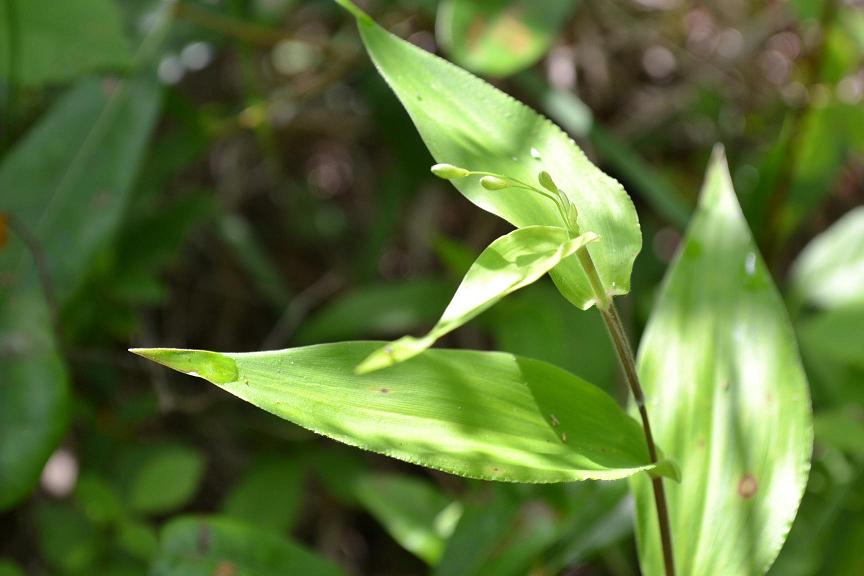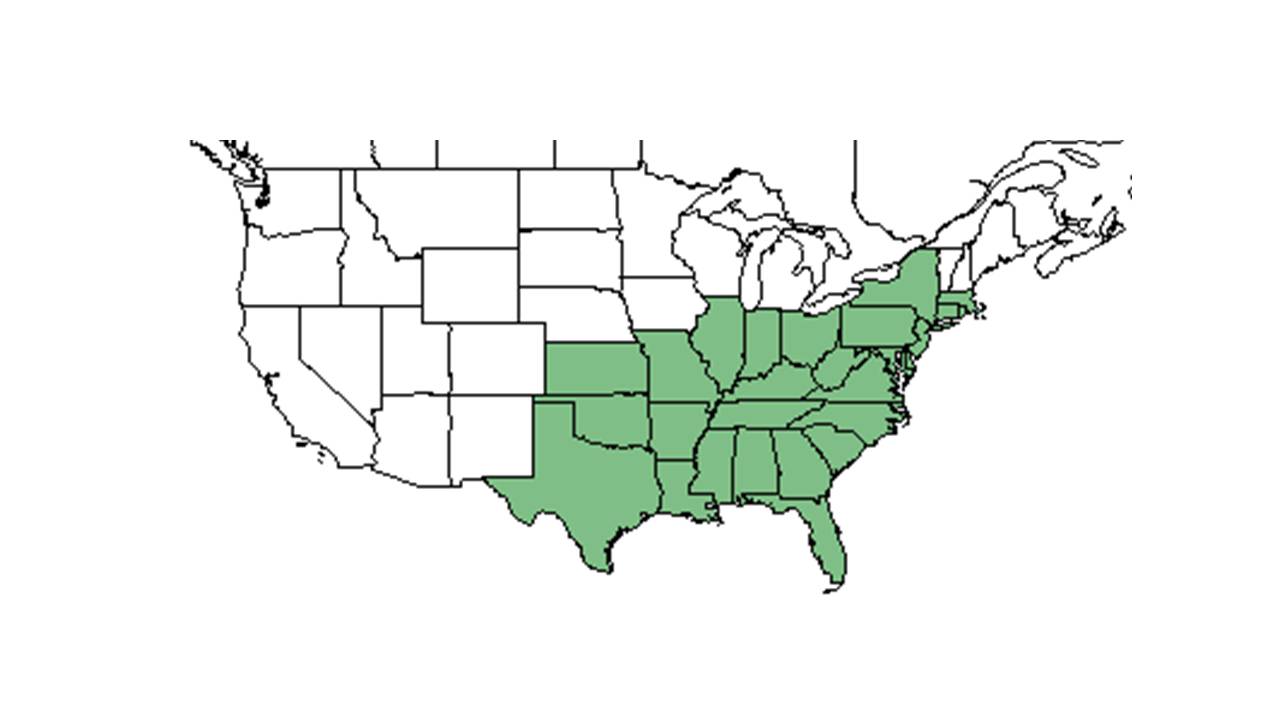Difference between revisions of "Dichanthelium boscii"
KatieMccoy (talk | contribs) |
KatieMccoy (talk | contribs) |
||
| Line 44: | Line 44: | ||
===Fire ecology=== <!--Fire tolerance, fire dependence, adaptive fire responses--> | ===Fire ecology=== <!--Fire tolerance, fire dependence, adaptive fire responses--> | ||
| − | ''D. boscii'' has been found in recently burned areas | + | ''D. boscii'' has been found in recently burned areas<ref name=fsu/>. |
<!--===Pollination===--> | <!--===Pollination===--> | ||
Revision as of 11:28, 21 April 2016
| Dichanthelium boscii | |
|---|---|

| |
| Photo taken by Kevin Robertson | |
| Scientific classification | |
| Kingdom: | Plantae |
| Division: | Magnoliophyta - Flowering plants |
| Class: | Liliopsida – Monocotyledons |
| Order: | Cyperales |
| Family: | Poaceae ⁄ Gramineae |
| Genus: | Dichanthelium |
| Species: | D. boscii |
| Binomial name | |
| Dichanthelium boscii (Poir.) Gould & C.A. Clark | |

| |
| Natural range of Dichanthelium boscii from USDA NRCS Plants Database. | |
Common name: Bosc's panicgrass
Contents
Taxonomic notes
Synonyms: Panicum boscii Poir.; P. boscii var. boscii Poir.; P. boscii var. molle (Vasey) A.S. Hitchcock & Chase
Description
Dichanthelium boscii is a perennial graminoid.
Generally, for the Dichanthelium genus, they have "spikelets usually in panicles, round or nearly so in cross section, 2-flowered, terminal fertile, basal sterile, neutral or staminate. First glume usually present, 2nd glume and sterile lemma similar; fertile lemma and palea indurate without hyaline margins. Taxonomically our most difficult and least understood genus of grasses, more than 100 species an varieties are ascribed to the Carolinas by some authors. Note general descriptions for species groups (e.g., 1-4, 5-8, 9-13, and 26-62)." - Radford et al 1964.
Specifically, for the D. boscii species, they are "Perennial with distinct basal rosettes; branching, when present, from nodes above basal rosette. Leaves basal and cauline, vernal and autumnal. Culms 2-6.5 dm tall, nodes retrorsely bearded, internodes glabrous, puberulent, or papillose-pilose. Blades to 13 cm long, 12-35 mm wide, glabrous puberulent, or pilose on both surfaces, margins ciliate; ligules ciliate, 1-1.3 mm long. Panicle 3-11 cm long, 1-8 cm broad; rachis and spreading-ascending branches villous. Spikelets ellipsoid, 3.7-4.2 mm long; pedicels villous to glabrous. First glume glabrous or pubescent, acute, 1.5-2.2 mm long, 2nd glume and sterile lemma puberulent or short villous, acute, 3.7-4.2 mm long; fertile lemma and palea 3.7-4.2 mm long. Grain 2 mm long, yellowish or purplish, broadly ellipsoid or subglobose." - Radford et al 1964.
Distribution
Ecology
Habitat
D. boscii occurs in a range of light conditions, from shady to open sun and in a variety of soil types, such as from moist loam, to wet clayey soil, dry rocky soil, moist sandy humus, loose sand, and dry soil. It can be found in natural communities such as mixed broadleaf woodlands, oak-hickory uplands, mixed woodland ravines, and river bluffs. In addition, it appears in disturbed habitats such as power line corridors[1].
Associated species include Carex cherokeensis, Schoenus nigricans, Acer saccharum ssp. floridanum[1].
Phenology
This species has been observed flowering in April, May, July, and August and has been observed fruiting in May, August, and October[1].
Fire ecology
D. boscii has been found in recently burned areas[1].
Conservation and Management
Cultivation and restoration
Photo Gallery
References and notes
Florida State University Robert K. Godfrey Herbarium database. URL: http://herbarium.bio.fsu.edu. Last accessed: June 2014. Collectors: Harry E. Ahles, Loran C. Anderson, Wilson Baker, D.J. Banks, W.T. Batson, Jr., Raymond Athey, Max Brown, Stanley A. Cain, W. C. Coker, George R. Cooley, R.F. Doren, J. A. Duke, Richard J. Eaton, Donna Marie Eggeres, Patricia Elliot, Mark A. Garland, R.K. Godfrey, Harry Heady, N.C. Henderson, Ann F. Johnson, Lisa Keppner, A.C. Koelling, R. Kral, H. Kurz, S.W. Leonard, R. L. Lazor, Robert F. Martin, J. B. Nelson, R. A. Norris, P. L. Redfearn, John W. Thieret, R. F. Thorne, John David Tobe, and L. J. Uttal. States and Counties: Florida: Calhoun, Gadsden, Jackson, Jefferson, Leon, Levy, Liberty, and Washington. Georgia: Brooks and Grady. South Carolina: Fairfield and Reidville. Kentucky: Lyon. Virginia: Allegany, Giles, Montgomery, Roanoke, and Tazewell. North Carolina: Alamance, Avery, Cabarrus, and Granville. Indiana: Cass. Pennsylvania: Monroe and Northampton. Arkansas: Newton. Alabama: Lee. Louisana: Caldwell, Iberia, and Ouachita. Missouri: Ripley.
Radford, Albert E., Harry E. Ahles, and C. Ritchie Bell. Manual of the Vascular Flora of the Carolinas. 1964, 1968. The University of North Carolina Press. 142-159. Print.
- ↑ 1.0 1.1 1.2 1.3 Florida State University Robert K. Godfrey Herbarium database. URL: http://herbarium.bio.fsu.edu. Last accessed: June 2014. Collectors: Harry E. Ahles, Loran C. Anderson, Wilson Baker, D.J. Banks, W.T. Batson, Jr., Raymond Athey, Max Brown, Stanley A. Cain, W. C. Coker, George R. Cooley, R.F. Doren, J. A. Duke, Richard J. Eaton, Donna Marie Eggeres, Patricia Elliot, Mark A. Garland, R.K. Godfrey, Harry Heady, N.C. Henderson, Ann F. Johnson, Lisa Keppner, A.C. Koelling, R. Kral, H. Kurz, S.W. Leonard, R. L. Lazor, Robert F. Martin, J. B. Nelson, R. A. Norris, P. L. Redfearn, John W. Thieret, R. F. Thorne, John David Tobe, and L. J. Uttal. States and Counties: Florida: Calhoun, Gadsden, Jackson, Jefferson, Leon, Levy, Liberty, and Washington. Georgia: Brooks and Grady. South Carolina: Fairfield and Reidville. Kentucky: Lyon. Virginia: Allegany, Giles, Montgomery, Roanoke, and Tazewell. North Carolina: Alamance, Avery, Cabarrus, and Granville. Indiana: Cass. Pennsylvania: Monroe and Northampton. Arkansas: Newton. Alabama: Lee. Louisana: Caldwell, Iberia, and Ouachita. Missouri: Ripley.